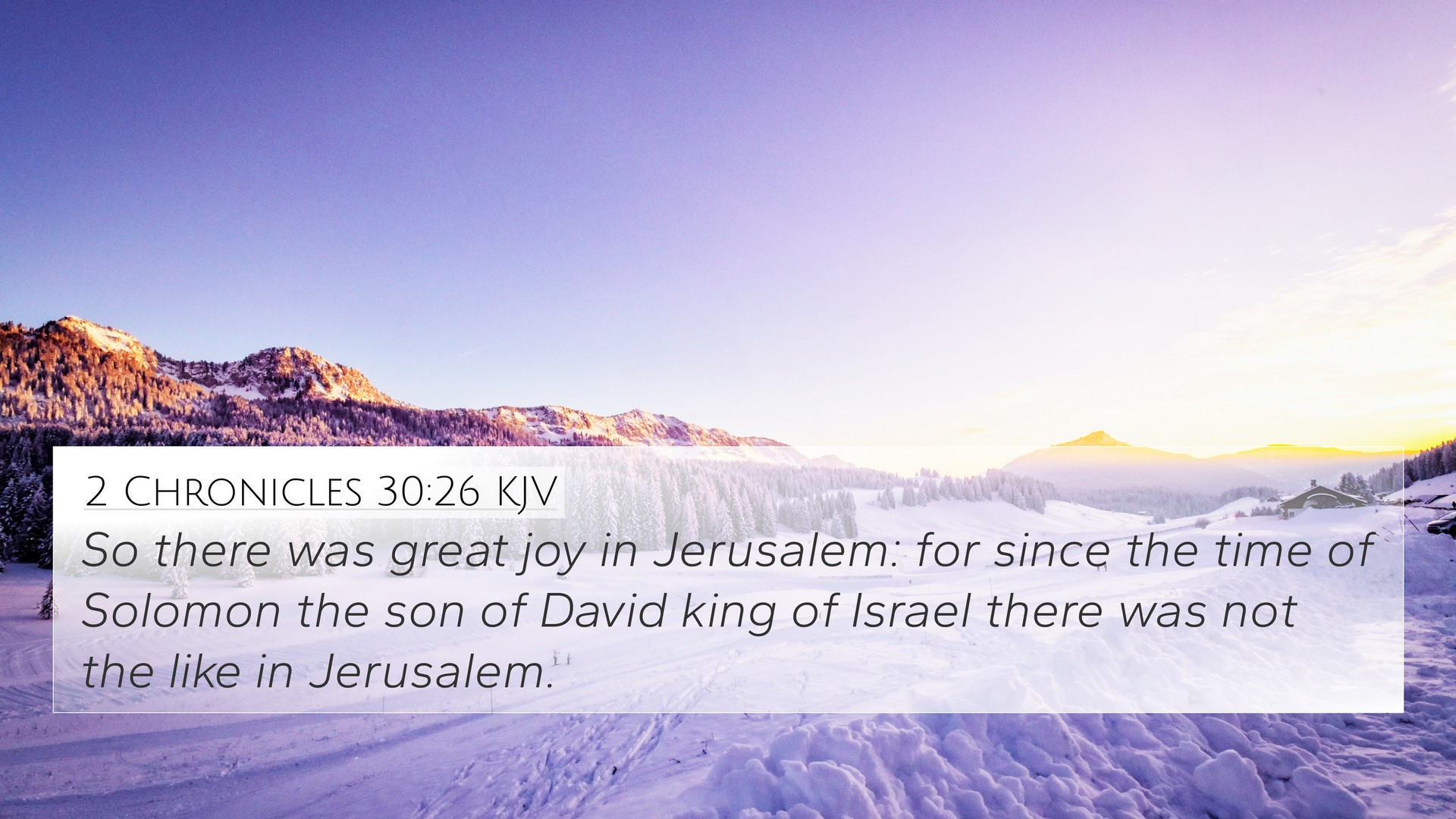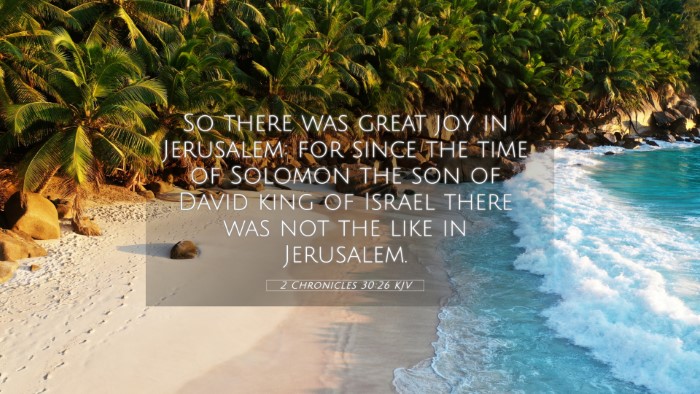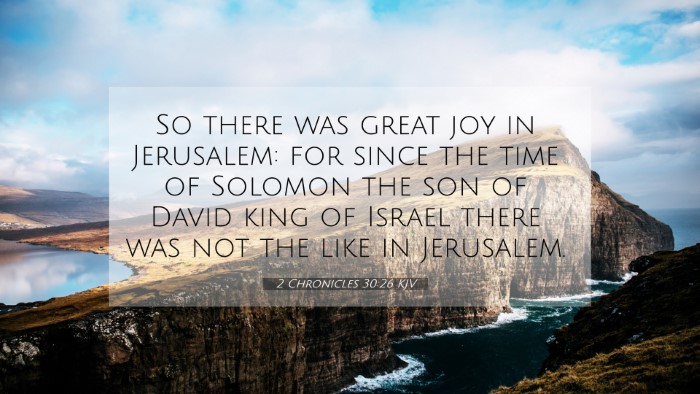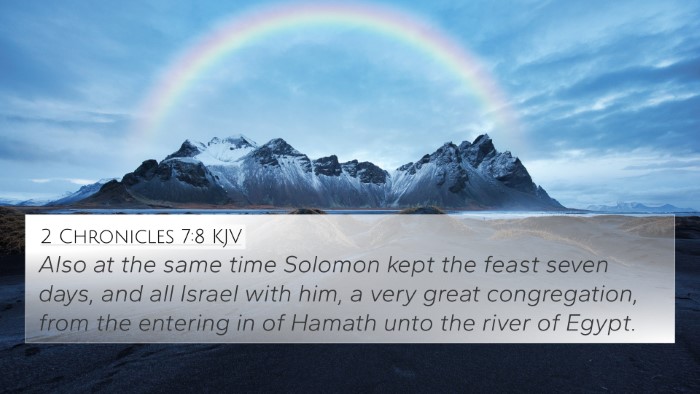Understanding 2 Chronicles 30:26
2 Chronicles 30:26 states: "So there was great joy in Jerusalem, for since the days of Solomon the son of David king of Israel there had been nothing like this in Jerusalem." This verse captures a significant moment of restoration and celebration in the history of Israel.
Context and Historical Background
This verse is situated in the context of King Hezekiah’s reinstitution of the Passover celebrations. After a period of neglect and idolatry, Hezekiah sought to return the people to the worship of Yahweh, culminating in a grand festival not observed since the days of Solomon.
Insights from Commentaries
-
Matthew Henry:
Henry emphasizes the significance of the joy experienced by the people, noting that it reflects a collective return to godliness and divine favor. He interprets this celebration as indicative of God's grace and the transformation occurring among the people.
-
Albert Barnes:
Barnes highlights the importance of this event in illustrating the unity and excitement within the nation. According to him, the revival of such a significant festival was marked by a heartfelt return to worship, which enriched the communal spirit of the Israelites.
-
Adam Clarke:
Clarke states that this joy signifies not merely happiness but a profound spiritual awakening. He relates it to the covenant relationship between God and Israel, indicating that true joy comes from alignment with God's purposes.
Thematic Connections
The joy expressed in 2 Chronicles 30:26 links profoundly with several biblical themes, including:
- Restoration: The nation, restored to right worship, mirrors the larger theme of restoration present throughout the Scripture.
- Celebration of Divine Favor: The joy in Jerusalem signifies acknowledgment of God’s blessings, a theme seen many times in Psalms.
- Worship and Community: The event reveals the essential relationship between worship and a communal identity among God’s people.
Bible Verse Cross-References
This verse connects with several other passages that deepen our understanding of its meaning:
- 1 Kings 8:65-66: Reflects on the celebration during Solomon’s time.
- 2 Chronicles 7:10: Describes a festive mood related to the Temple's dedication.
- Psalm 118:24: Proclaims a day of rejoicing which can parallel the joy of the Passover.
- Isaiah 25:9: Speaks of joy and salvation, echoing themes of hope similar to those in this verse.
- Nehemiah 12:27-43: Celebrates the dedication of a wall, emphasizing communal joy in restoration, akin to Hezekiah’s Passover.
- Luke 15:10: The joy in heaven over one sinner who repents provides a New Testament parallel to communal rejoicing.
- Philippians 4:4: Encourages rejoicing always, linking back to the joy found in worshiping God.
Cross-Referencing Biblical Texts
This verse exemplifies how cross-referencing enriches our appreciation and understanding of the Biblical texts. In many ways, the connections made through scripture reflect God's intention throughout the ages for His people to recognize His sovereignty and respond with joy and worship.
Application and Reflection
In studying this verse, we can reflect on the importance of collective worship and the joy it brings. It challenges us to consider how we engage in worship as a community and the historical significance of returning to foundational practices of faith. Furthermore, it invites us to explore how our own lives reflect the joy of knowing God amid a world that may forget His ways.
For further study, exploring tools for Bible cross-referencing can provide deeper insights into how different scriptures interact and contribute to a greater understanding of God's narrative. Utilizing a Bible concordance or a cross-reference Bible study can enhance our exploration of these connections.



